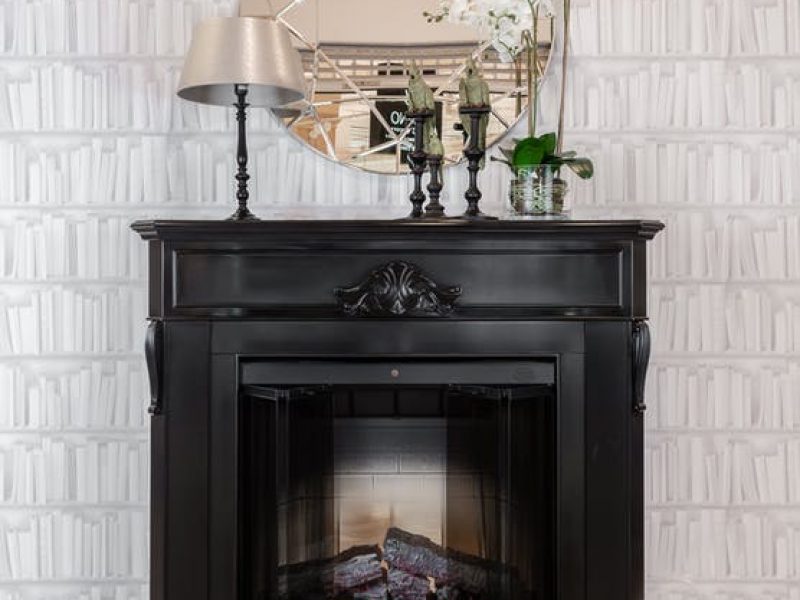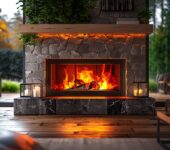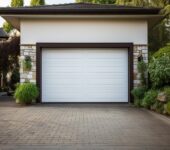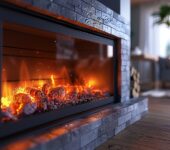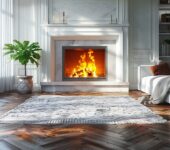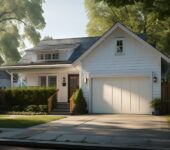Table of Contents
Are gas fireplaces safe?
Gas fireplaces are considerably safer than wood-burning equivalents since there are no matches, smoke, sparks, backdrafts, or soot, but that doesn’t mean owners should overlook basic measures.
If you own a gas fireplace, you know just how stunning it can look inside the home. They add an air of comfort and hominess to any room, whether they’re burning or not!
However, here are a few things you can take to reduce the risks posed by even the safest new fireplace.
Benefits of Gas Fireplaces In the Home
Residential fireplaces that use gas are a great way to heat and enhance the visual atmosphere of any home. However, there are plenty more benefits to gas fireplaces than that!
If you’re worried about having to give up the attractiveness of a wood-burning fireplace, you’re in luck! Gas fireplaces’ fake wood appears remarkably genuine and may provide a much-needed atmosphere to a space.
You may experience the appearance and feel of a typical wood-burning fireplace with our gas fireplaces’ lifelike ceramic logs and embers.
Additionally, wood-burning fireplaces may need a bit more knowledge than gas-burning devices. Gas fireplace inserts take the time-consuming and often dirty job of lighting and maintaining a wood-burning fire out of the equation.
Experience is required to set up the wood such that it will quickly ignite and enable appropriate ventilation. Controlling the quantity of heat produced by a wood-burning fireplace may sometimes be difficult.
With a gas fireplace, you can quickly light it and regulate the temperature with the flip of a switch.
Gas-burning fireplaces outperform other fuel sources in terms of efficiency. When you utilize gas, you have complete control over how much gasoline you consume at any one time.
With the flick of a button, you can quickly modify the quantity of gas consumed and turn it totally off. Gas fireplaces are also significantly more ecologically friendly because they don’t produce smoke like wood or other plant-based fuels.
Lastly, a gas fireplace requires relatively little maintenance and care between usage. There will be no need to scoop out ashes or other wood trash. Your gas insert will make less mess and require far less cleaning to be spotless.
Be Aware of Clearance Zones
Every fireplace, no matter how modern, has a clearance zone. The clearance zone is an area around which combustible or easily damaged goods should not be placed.
Never put wood, newspapers, books, draperies, or anything else directly against the glass or too close to the firebox. These objects may easily catch fire and put your home or your family at risk.
When decorating a mantel, keep combustible things, such as foliage, a safe distance away from the fireplace entrance.
During the holiday season, be sure that flammable stockings and draping garlands are properly hung and do not go too close to the open firebox. Also, keep your Christmas tree, which is particularly combustible, away from the heat.
Keep Up With Maintenance
Your gas fireplace, like your smoke alarms, should be examined on a regular basis. Professional inspections and maintenance on a yearly basis not only help you to extend the life of your fireplace but also uncover any safety problems that need to be addressed.
Homeowners should get their gas fireplaces examined at least once a year.
Modern gas fireplaces require significantly less care than their wood-burning brick counterparts, but it’s still a good idea to arrange an annual maintenance inspection to ensure everything is in working order.
When is the ideal time to get a fast checkup? Before winter arrives and you start the first fire of the season.
Use a Safety Screen
A safety screen is typically a glass panel that separates the firebox from the interior in gas fireplaces. As a result, they are safer and more efficient.
The only issue? The glass gets very hot. Anyone who comes into contact with it will be severely burned. The safety risk is too severe in houses with children.
As a result, it is mandated that every direct vent fireplace include a safety mesh screen to avoid major burns. While most new fireplaces come equipped with a practically invisible, fine mesh safety screen, it is your responsibility to ensure that the installation has properly attached it to the device.
Teach Children About Fireplace Safety
Even the most powerful safety barriers cannot eradicate the risk posed by hot glass, which is why parents should instruct their children not to play near the fireplace when the flame is blazing.
They may even create a “no-go zone”, ideally, one or two feet in front of the fireplace, to keep small children and pets away from it.
Use Smoke Detectors
We recommend that every homeowner install both smoke detectors and carbon monoxide detectors on every level of their house if they haven’t already.
Smoke detectors and carbon monoxide detectors are two important pieces of safety equipment that can save your life. Even though your fireplace appears to be in good operating order, anything might go wrong without your knowledge.
To be safe, you should check your detectors on a regular basis to ensure that they are in good working order.
Are Gas Fireplaces Safe?
So, you’re wondering: are gas fireplaces safe? Our answer is yes!
In fact, gas fireplaces are safer than wood-burning fireplaces. However, as is the case with any sort of fire, you need to have common sense when the thing is ablaze.
Contact Dreifuss Fireplaces before the temperature drops to find out which type of gas fireplace is appropriate for your house and lifestyle. Our experts can give experienced advice on selecting and installing the ideal gas fireplace for your specific requirements!
Latest Articles

Glass Door Garage: Elegance With Every View
Table of Contents1 What Is a Glass Door Garage?2 What Are the Benefits of a Glass Door Garage?3 What Are the Different Types of Glass

What Is Cleanburn?
Table of Contents1 What Is Cleanburn?2 How Does Cleanburn Work?3 What Are the Benefits of Cleanburn?4 What Types of Appliances Use Cleanburn Technology?5 How to
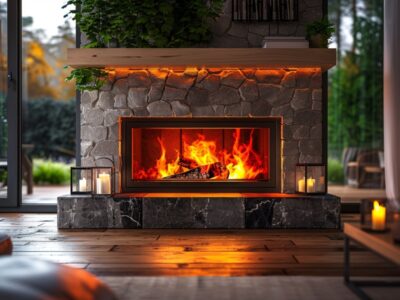
How Long Does It Take To Install A Fireplace?
Table of Contents1 Factors That Affect Installation Time2 How Long Does It Typically Take to Install a Fireplace?3 Factors That Can Extend Installation Time4 What



